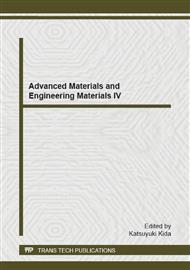p.420
p.424
p.429
p.433
p.437
p.441
p.451
p.455
p.459
Silicon Doped Boron and Glass Based Surface Bonding Strength Analysis via Anodic Bonding Approach
Abstract:
In this paper, the bondability of silicon bonded to different glass based material was studied by analyzing the bond strength comparison using the anodic bonding approach. The three types of glass based surface used were silica, pyrex, and soda lime glass. Experiments were carried out using an in-house designed anodic bonder and the bond strength were measured using a bond strength tester. Silicon will be placed on the positive terminal while the glass based materials will be placed on the negative terminal. The anodic process was done in two sets which are before and after the cleaning process for each sample. For every set, there are three different bonding partners, which are silicon with silica, silicon with Pyrex, and silicon with soda lime glass. From the results, it can be seen that majority of the samples showed higher bond strength after the cleaning process. Silicon bonded to soda lime glass showed the highest bond strength compared with other materials. This was followed by silicon to pyrex bonding and finally silicon to silica bonding. The maximum bond strength for all samples achieved in the range of 25 until 35 minutes of bonding time. After that, all samples show a critical decrease of bond strength except for the bonding process between silicon doped boron and silica. Cleaning process was proven a critical factor to achieve better bondability as shown in the higher bond strength obtained.
Info:
Periodical:
Pages:
437-440
Citation:
Online since:
December 2014
Keywords:
Price:
Сopyright:
© 2015 Trans Tech Publications Ltd. All Rights Reserved
Share:
Citation:


